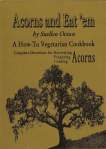American Indians who lived in the Southeast, did not want to be relocated, but when they had no choice, they at least wanted to remain east of the Mississippi River. Here are the 26 states that are east of the Mississippi River: Alabama, Connecticut, Delaware, Florida, Georgia, Illinois, Indiana, Kentucky, Maine, Maryland, Massachusetts, Michigan, Mississippi, New Hampshire, New Jersey, New York, North Carolina, Ohio, Pennsylvania, Rhode Island, South Carolina, Tennessee, Vermont, Virginia, West Virginia, and Wisconsin.
Those of us who live in the west, don’t think about the Mississippi River as a boundary. We think of the Sierras, the Coastal Mountain Range, and the Rocky Mountains. But we need to imagine what a loss it would be, to be relocated across the big Mississippi. Far from family. From tribal lands.
Suellen Ocean is the author of Secret Genealogy IV – Native Americans Hidden in Our Family Trees:

